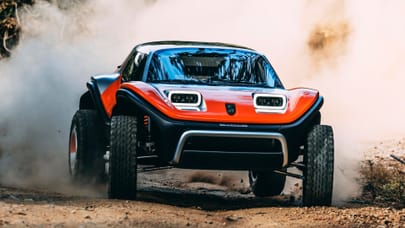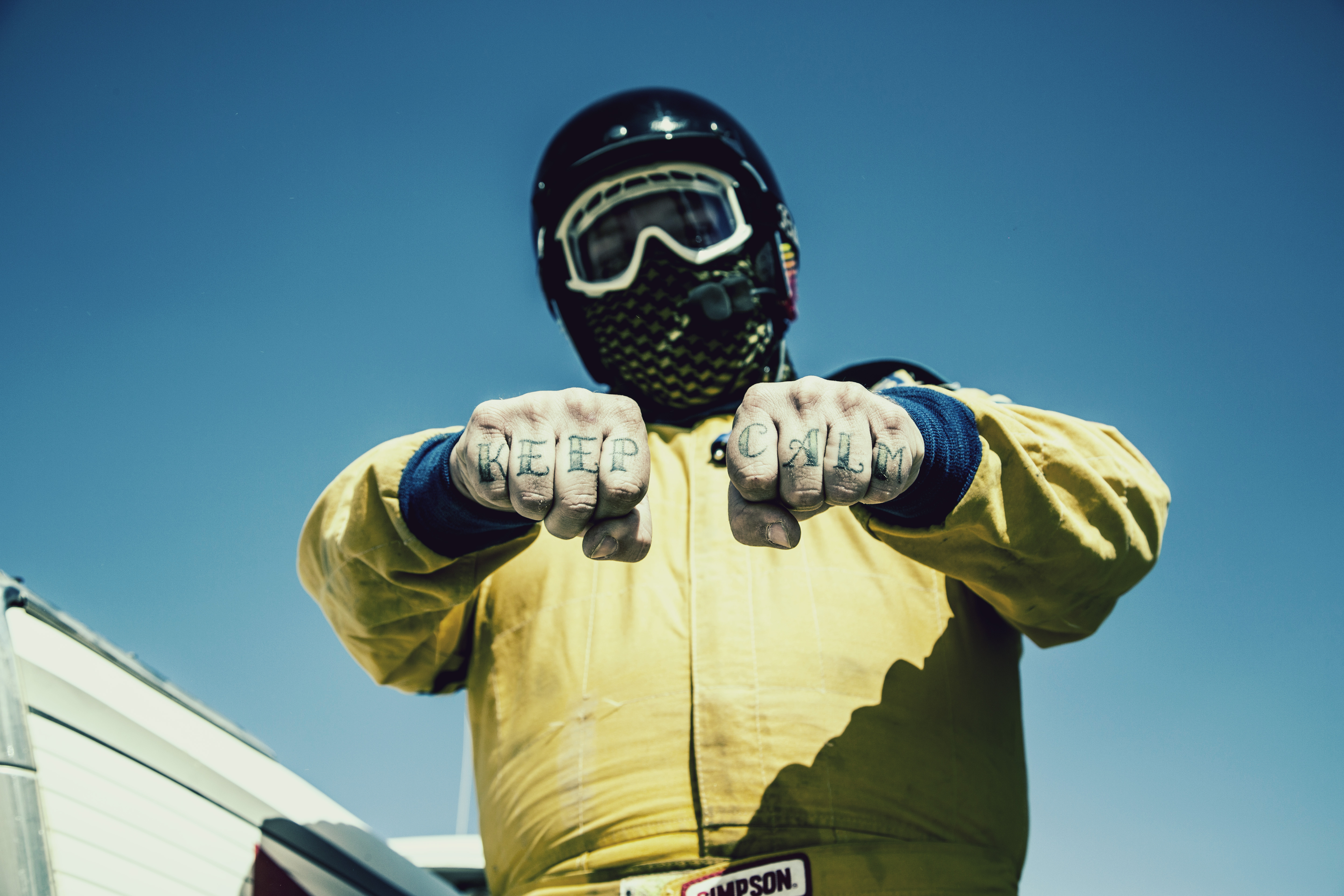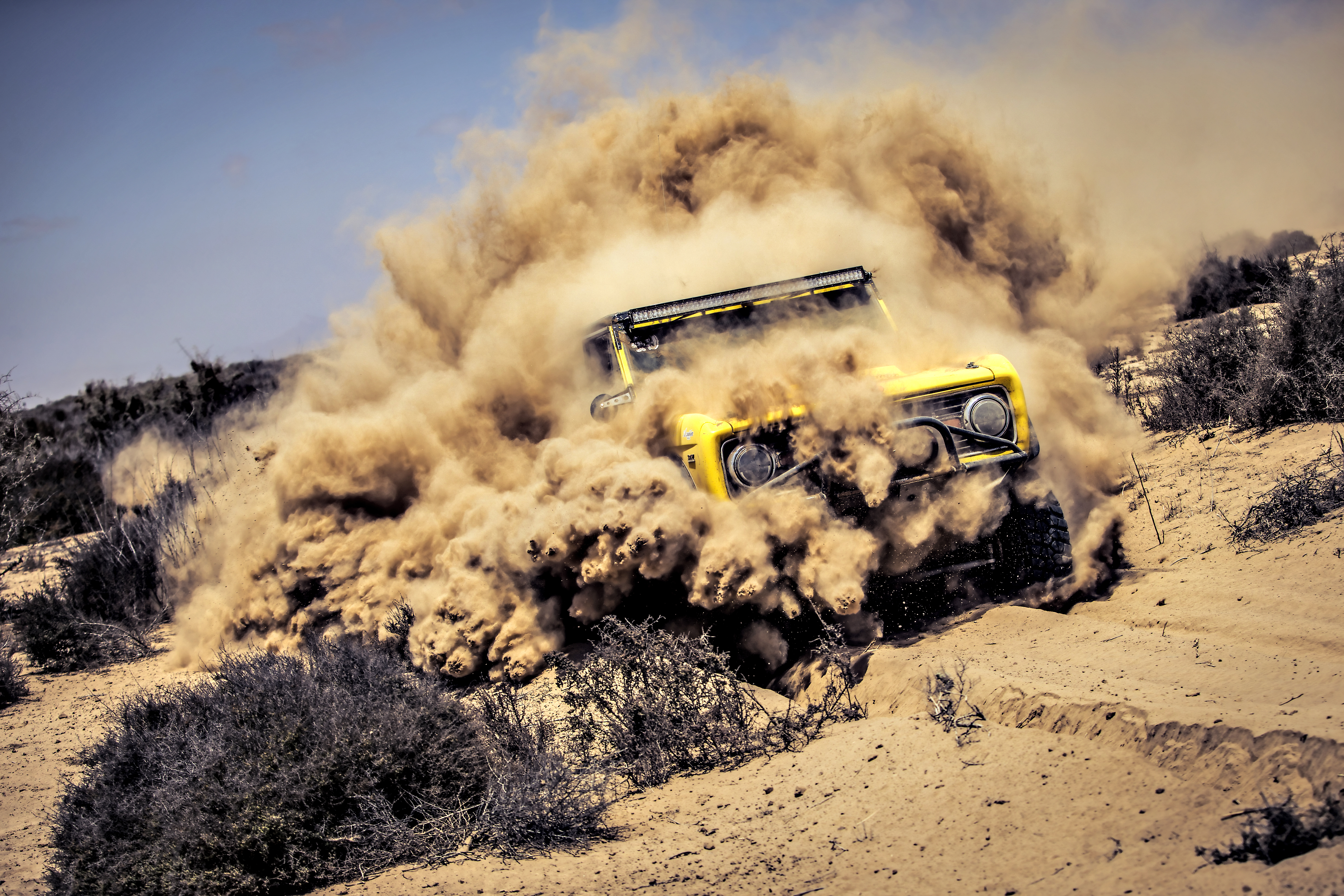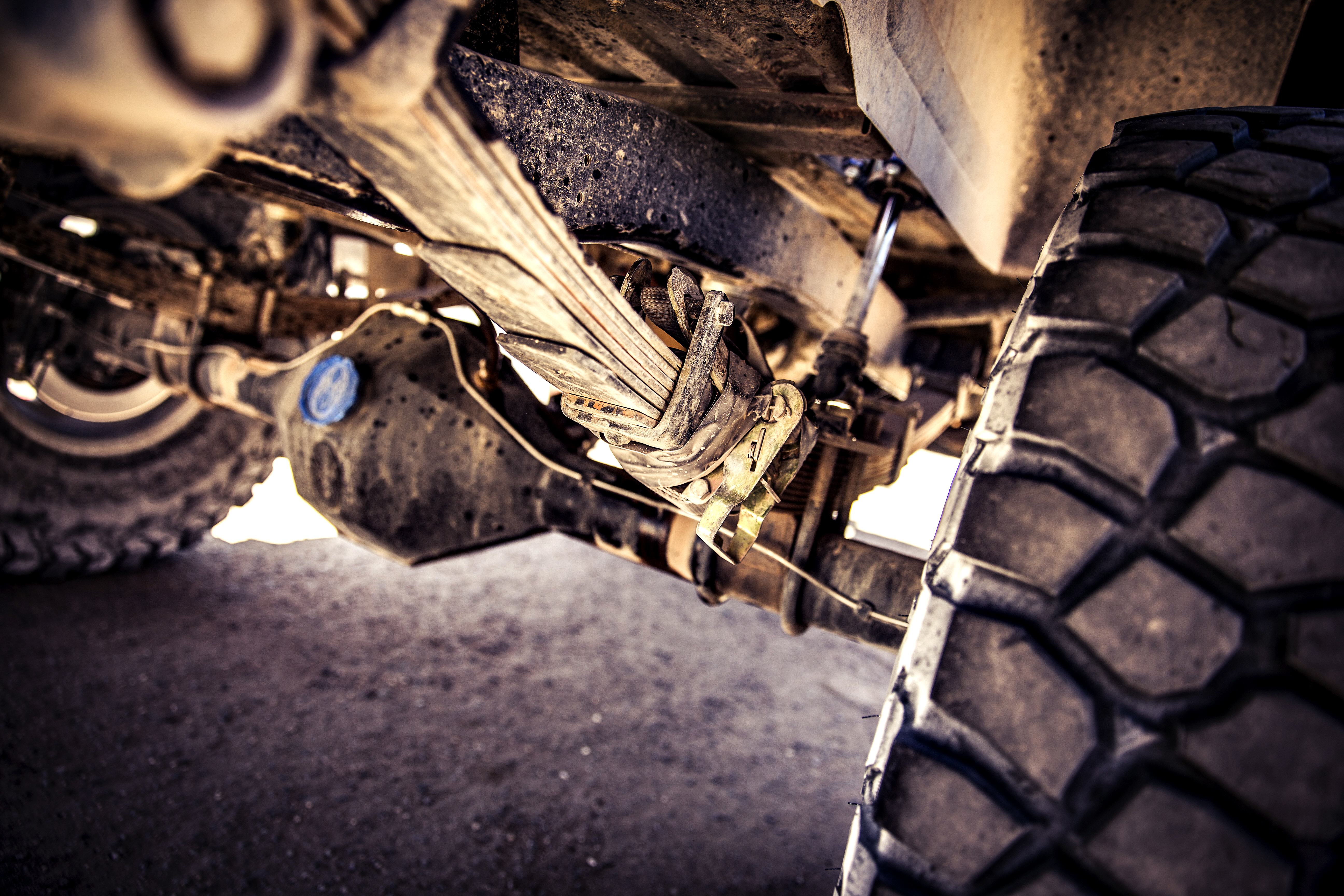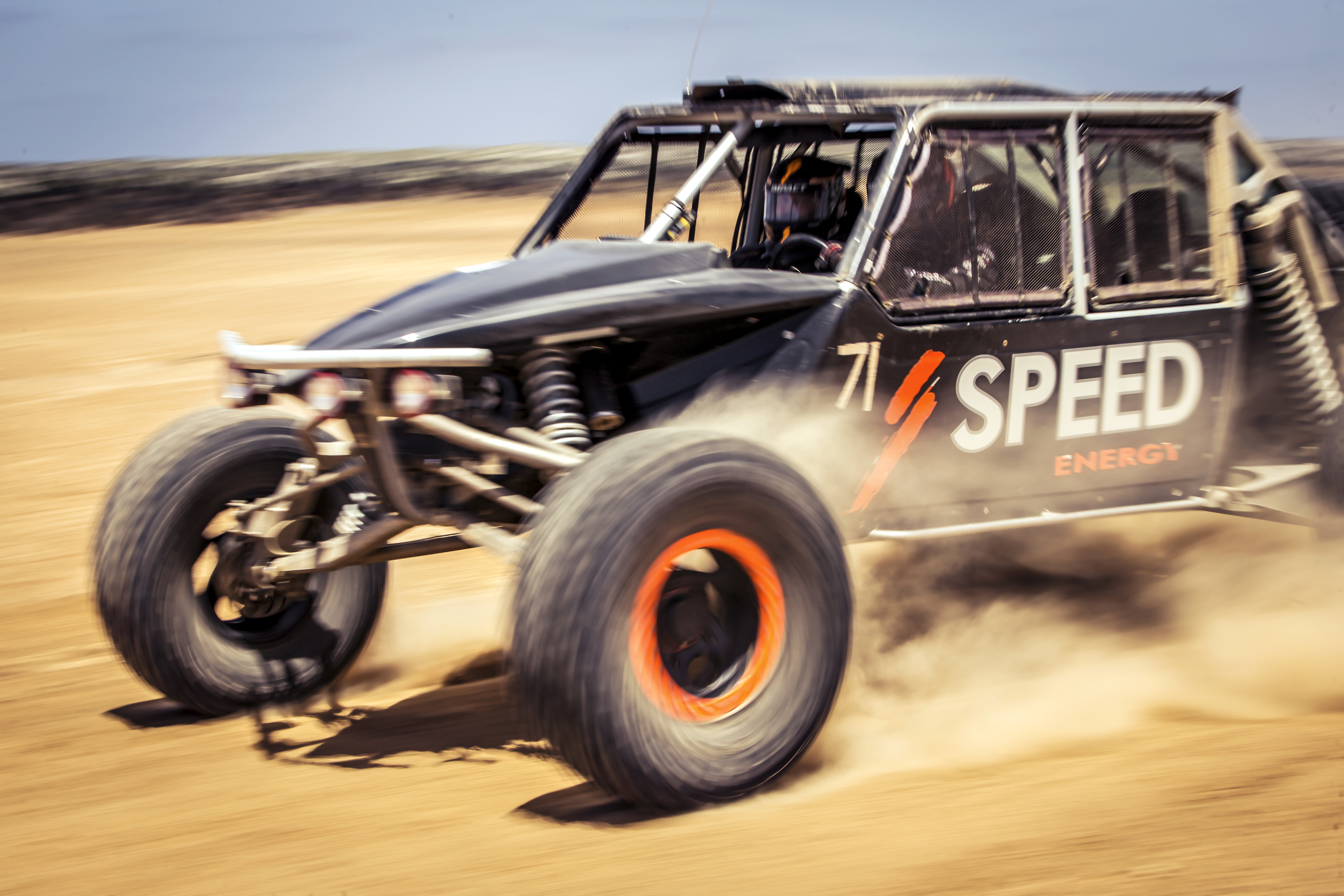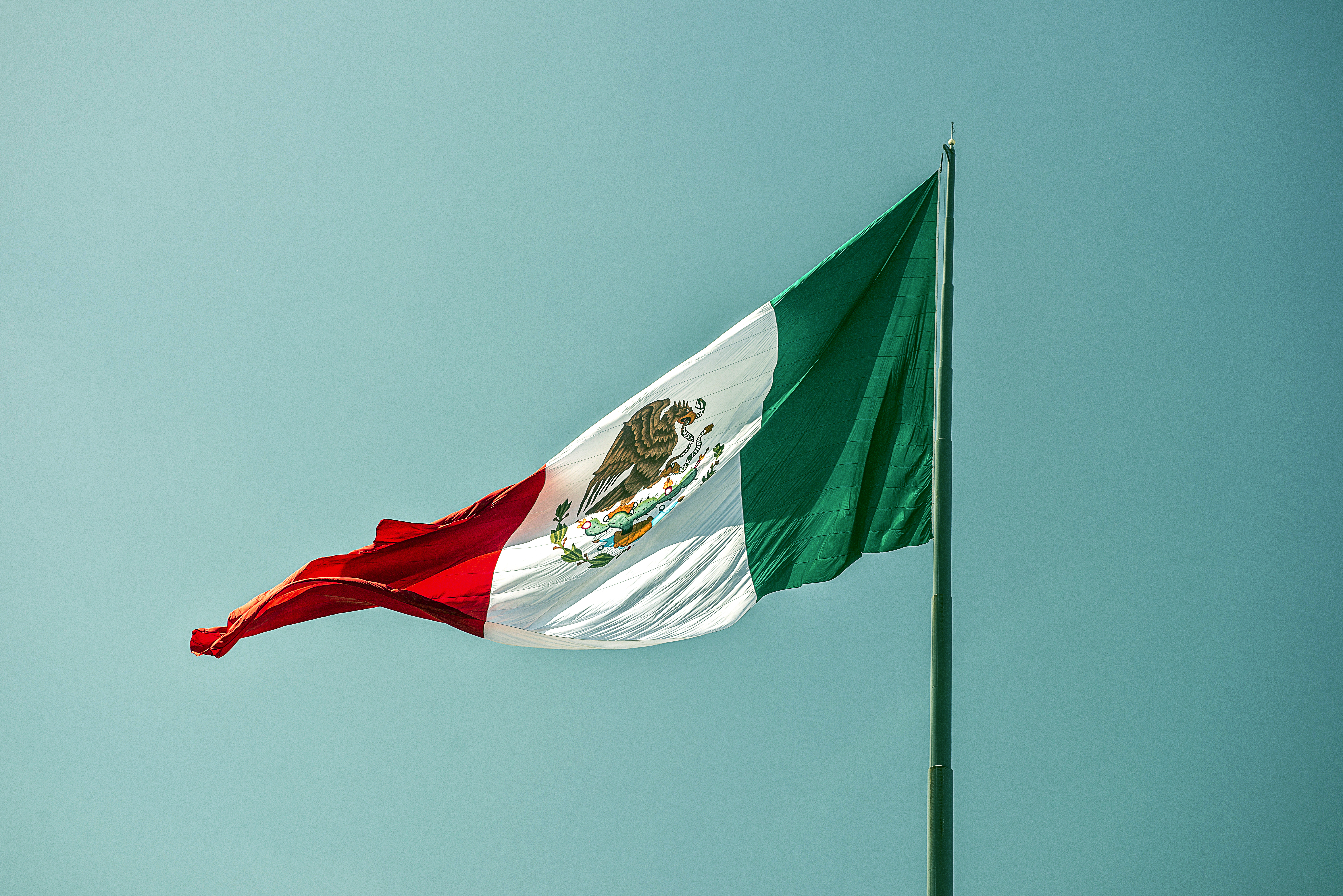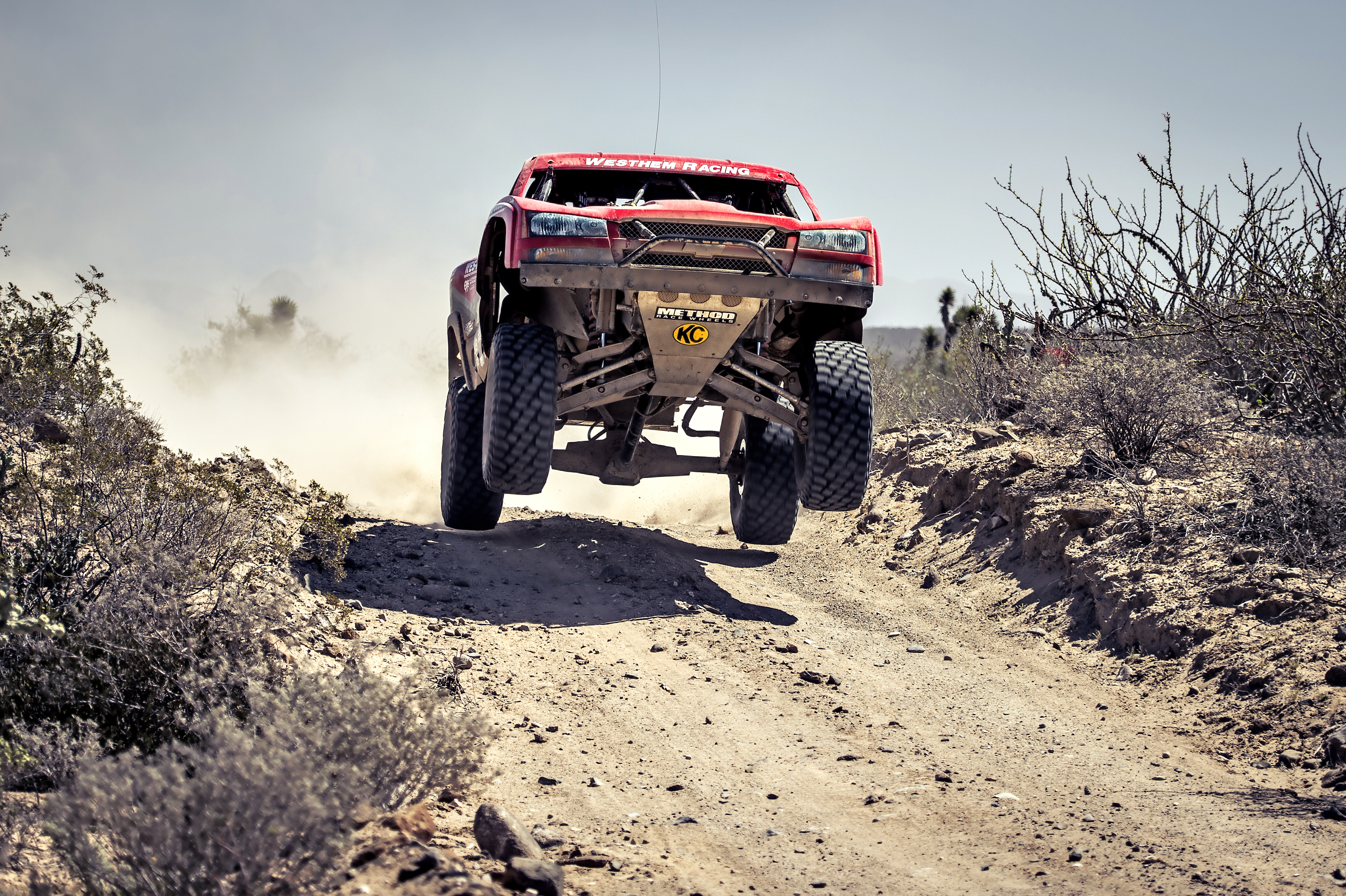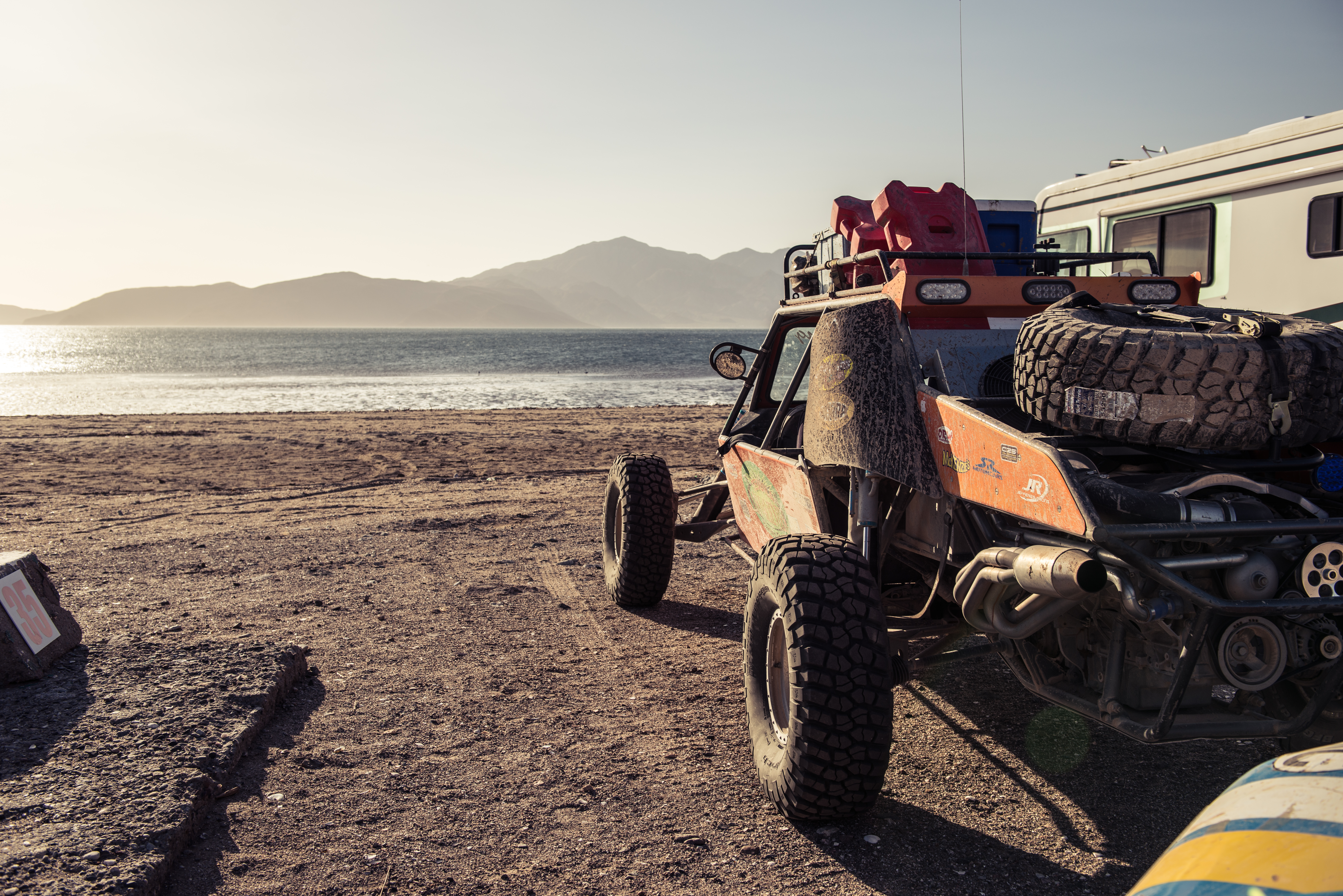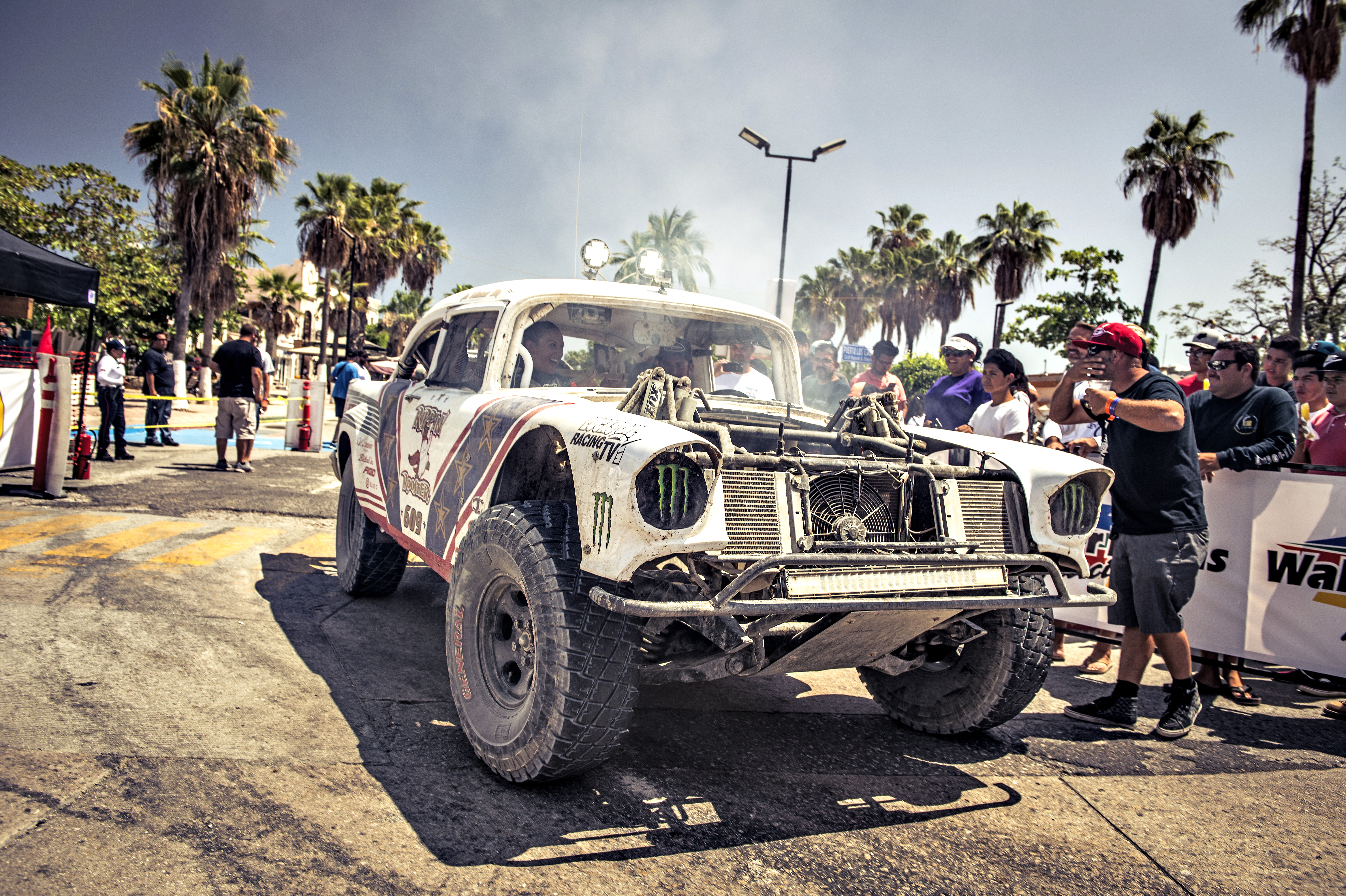
TG does the Mexico 1000
We ride shotgun in one of the rawest off-road races on the planet
"You know what that means, right?” a cheery competitor says as he points to three emboldened exclamation marks. I nervously shake my head. “Death.” Oh dear. I’m in Baja, Mexico, the estranged slither of land that’s orphaned by California above it, and by mainland Mexico that’s a hop across the sea to the east. I seem to have bitten off more than I can chew.
The plan is to sit shotgun and navigate a torturous 1,400-mile off-road route from Ensenada (at the top of the Baja peninsula), down to holiday hotspot San José del Cabo (at the southernmost tip) as part of the NORRA Mexico 1000. Problem is, my rally navigating nous extends to exactly zilch, and flicking though the course book I find six more triple exclamation marks in the first few pages. I’m officially bricking it.
Words and photography: Rowan Horncastle
First, some history. The Mexico 1000 was actually the original race down Baja. Conceived by a chap named Ed Pearlman back in the late Sixties, he wanted to prove to legendary Hollywood stuntmen Bud Ekins and Eddie Mulder that four wheels were better at smashing it down this scorched and rugged peninsula than two. So, in 1967, Ed set up the National Off-Road Racing Association (NORRA) to sanction a race that allowed him and 60 of his mates to race from Ensenada to La Paz. There was one stipulation: each entrant had to throw $100 into a pot to be spent on the mother of all parties at the finish.
This happened annually, until SCORE (another race organiser) took control of the event in 1973 and cultivated it into what we now call the Baja 1000. But in 2010, wanting to inject some fun back into the now very serious and corporate world of off-road racing, Mike Pearlman – son of Ed – put some sticky defibrillator pads on the deceased NORRA Mexico 1000 and brought it back to life. Party an’ all.
NORRA splits the mileage up into four days – instead of one cut-throat slog like the Baja 1000. It’s still against the clock, and there’s silverware to be won, but it’s not half as fighty as its Baja brother. It’s more of a celebration of going stupidly quickly on the rough stuff with good times along the way.
That doesn’t mean it’s a doddle. Baja is a notoriously dangerous place to race, and fatalities are common. Jeopardy is part of the fabric that makes these off-road events so special. With civilisation sometimes hours away, no phone signal and savage conditions, it’s a place to respect. Especially considering the vehicles that take part.
Looking at the characteristic field of cars, trucks, buggies, truggies and bikes, they are a mishmash of Honey, I Blew Up the Tamiya Factory and Mad Max: Fury Road’s prop department. From winsome Meyers Manxs to military-grade trophy trucks, competitors are divided into six different eras that span the life of off-road racing then restricted by period-correct technology. To avoid updating everything to the highest, fastest and most modern spec possible, NORRA wants to keep vintage, vintage. Something classic circuit racing could learn from.
Over the course of the race, my spine will be subjected to three flavours of off-roaders, from three eras. I’m aware that a mumbled pace note could have catastrophic consequences, so learning how to navigate and speak the language of off-road is key. A fistful of highlighters is sourced and an intensive lesson in co-driving tutored by six-time Baja 1000 and two-time Dakar Class winner Darren Skilton.
There’s nothing quite like gaffer-taping your passport to your sternum to ease the mind
Unlike the Dakar, where satnavs are banned, GPS systems are allowed at NORRA. What the GPS doesn’t show are the bumps, jumps, severity of corners, dips and cautions that make up this formidable landscape. That’s where late-night cramming comes in.
Race day. After a sleepless night imagining every worst possible outcome, there’s nothing quite like gaffer-taping your passport to your sternum to ease the mind. It’s an advised precaution just in case you bend yourself so far out of shape you need to be choppered back to the US. Best to ease myself into this off-road business gently, then? Not a chance. The first car to sample is a wonderful red, white and blue retro-liveried Nissan Hardbody.
Top Gear
Newsletter
Thank you for subscribing to our newsletter. Look out for your regular round-up of news, reviews and offers in your inbox.
Get all the latest news, reviews and exclusives, direct to your inbox.
Built in 1990 by Nissan Motorsports, it was a ground-breaking concept and tremendous failure in equal measure. One million dollars were thrown at it to take the fight to the big-hitters in the top-tier unlimited class. It was the first truck to be designed solely on a computer. Being mid-engined, incredibly light, with trick independent suspension, AWD and fitted with revolutionary 37in BF Goodrich tyres, it seemed like the perfect recipe. But that fancy 4WD system made it horrendously unreliable. Testing included, it only clocked up a measly 300 miles before being banished to the back of Nissan’s factory forever.
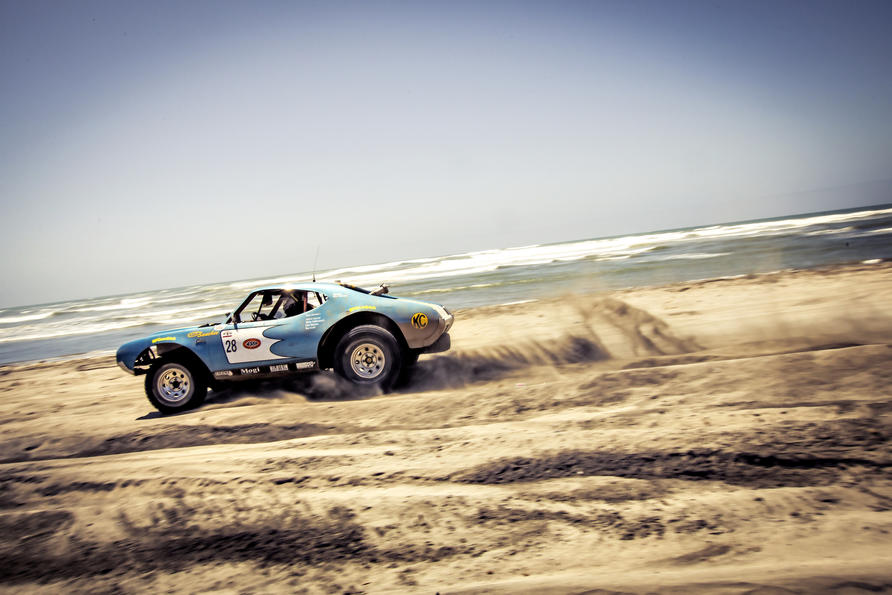
It’s now privately owned and been shorn of its front driveshafts to be run by the Gentleman’s Guide to Racing for this event – a team spearheaded by two British expats: Michael “Skiny” Power and his hilarious six-foot-seven, mini-moto-riding human Sasquatch and “cultural attache”, Spanish Tony.
“Remember, just have fun,” Skiny says over the intercom as he buries the throttle and smothers the start marshal in dust. I try, but the first mile of racing is pure panic.
Unbeknown to me, the GPS system has been set to north orientation, rather than my preferred direction of travel. This requires 10 minutes of brain rewiring to know what left and right looks like upside down. Then, a buggy we’re chasing spits a monster rock out of its rear wheel that boffs me straight on the visor. Ouch. Now properly awake, Skiny and I quickly sync, and my directions (bar two snafus) are hooked up to his driving inputs. Things flow, and we start reeling in slower competitors… then overtake them.
Vapour trails of dust billow for miles behind our truck. The angry, race-bred 4.0-litre engine gargles on the overrun while, amazingly, the Nineties suspension soaks up fridge-sized boulders with a shrug. It’s awesome. Then, we turn a left to find the road has turned into a 12ft crevasse. Reality, checked.
The 100-mile stage is fast with a mixed platter of Mexican scenery: vast cactus forests, massive boulder fields, coastal drop-offs, tiny villages, rivers, rocky, churned-up desert and wide-open sections that have the right pedal pinned for miles and miles. Crossing the stage finish, my brain hurts from concentrating so hard for three hours solid, but any Baja trepidation is vapourised, and I just want to get in another car.
I may’ve talked too soon. After a frivolous remark in the bar, next I’ll be shouting directions at Robby Gordon for a day. Yes, that Robby Gordon. Off-road legend, creator of the pleasingly childish Stadium Super Trucks series and someone who’s raced pretty much every form of four-wheeled vehicle possible.
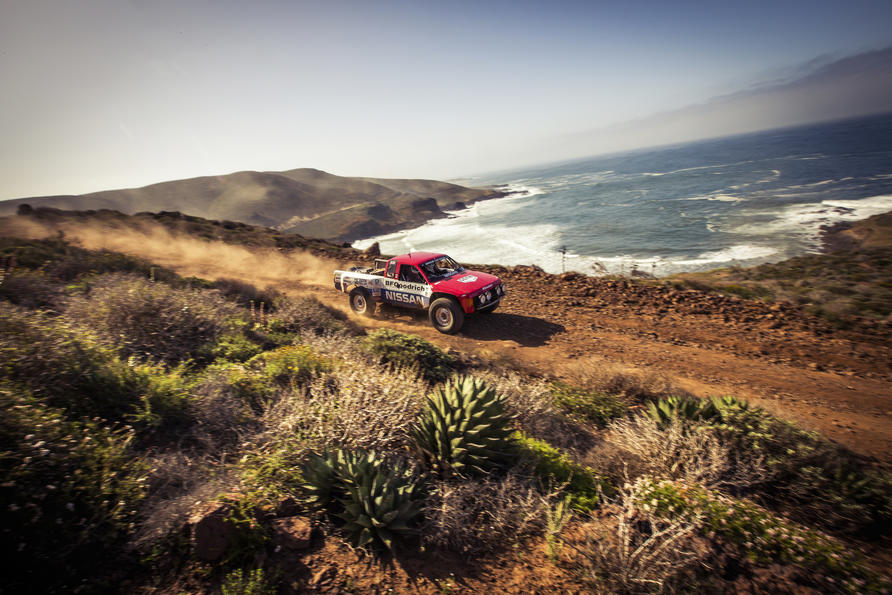
For the sake of TopGear's Health and Safety department, I stress that self-preservation is key. “There’s no one in the world I love more than myself,” the former NASCAR driver says with a smile. “We’ll be fine.” He’s amazingly relaxed, and due to an axle failure on day one, not in contention for a win. So even offers me a drive. That proposition doesn’t hold much water when we get going.
His 2003 Class I buggy (basically a lightweight, panel-less trophy truck) with a six-speed sequential ’box from an Indy car, 24in of suspension travel at the front, 20 at the back and a 600bhp pump-gas Corvette engine, is a massive step on from the Nissan, and we start picking off competitors like a prized sniper.
Due to a comms failure, navigation has been reduced to hand signals that make me look like a Nineties raver. Likelihood of death is dictated by increasing levels of floppiness, while my mistakes are clarified by Robby angrily bashing the steering wheel with his fist. This happens a few times.
Being a veteran, the Baja is Robby’s backyard. He’s done parts of this 232-mile stage from Loreto to La Paz before and likes to go off-piste. The 1,270kg buggy (less than half the weight of those top-tier lolloping Trophy Trucks) is fantastically nimble – largely due to being able to lock each side individually and turn like a tank. It’s also amazingly competent at scuttling over rocks and skating over silt beds. But an S-Class it is not.
Although the suspension set-up is utter witchcraft, Baja’s topography beats it viciously. Whoops compress your lungs to expel involuntarily like two whoopee cushions, boulder fields clatter your internal organs together into one squidgy Newton’s cradle, and when you wake up the next day to find blood in your urine, you know your kidneys have cried mercy from all the jumps. But covering ground at 120mph that a Range Rover would struggle with at all is one hell of a rush.
Robby is a dirt doyen. His commitment and millimetric precision allows him to wield the wobbly buggy into impossible positions. My brain fails to compute the car’s ability. Firing into a quarry of giant dinosaur eggs at close to 100mph is only possible by detaching brain, gritting teeth and making sure the next pace note is teed up. Most of the time it works, until I miss a tight left and we jump straight past it and into a field… nearly writing off a horse. But being able to drive over pretty much everything on Earth, we just relocate the track via GPS and plough on.
Crossing the line, we’ve only gone and bloody won the day. On the podium, I feel like a fraud. Mexicans think I’m Robby Gordon’s actual co-driver. I’m pulled over for selfies, forced to sign their phones for which, if it were in the UK, I’d be arrested for defacing personal property. But in Mexico, I’m a bona fide hero.
Time to knock my confidence down a peg or two. Step in Jim Riley, owner of a tequila company and one of the most iconic cars on the rally: Rippin’ Rooster. It’s a lifted 1957 Chevy Bel Air on 35in tyres with 48 wins, eight championships, and nine Baja 1000s under its belt. It also looks like it should be driven by a War Boy. But with an oil pan leak, only seven functioning cylinders and a driver with a ripped chest muscle, both it and its driver are quite poorly after 1,200 miles of Baja abuse.
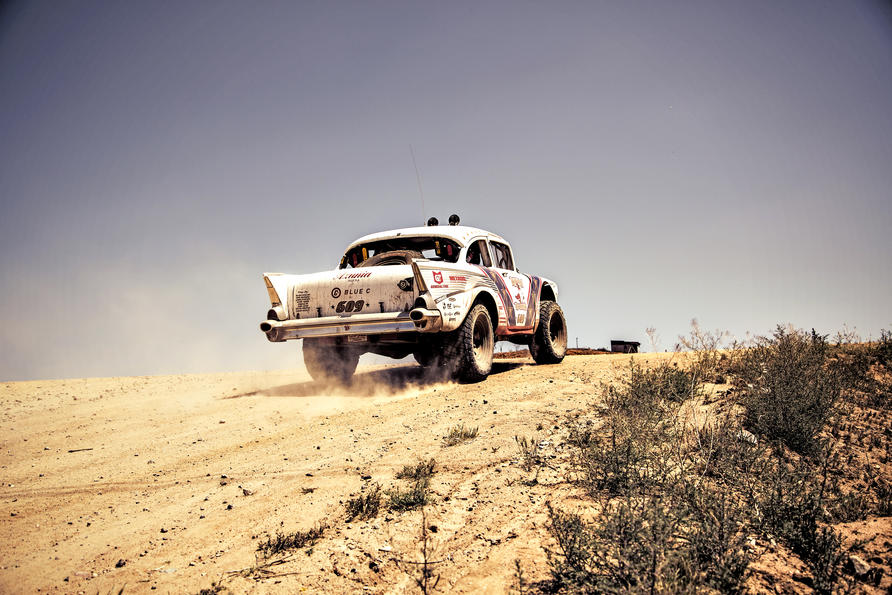
My final stage to navigate in the Rooster is short but brutal. A steep 20-mile climb up a treacherous and unforgiving mountain before dropping down into a sweeping, sandy stretch into San José del Cabo. And don’t let those protruding bonnet shocks fool you – to remain true to its period, the Bel Air has about one inch of travel all round and weighs about the same as a medium-sized block of flats.
Belts tightened to “scrotum popping”, triple exclamation marks noted (too many to count) and an industrial bottle of oil between my legs, we begin the ascent. Being one of the oldest and slowest cars, we’re one of the last to leave. The small-block V8 is burning oil emphatically – chugging a constant smokescreen into the cabin. Immediately the fuel pressure starts to drop. We begin a balancing act of enough throttle to keep the pressure up, but not so much the car overheats on the slow, harrowingly tight rutted rock and gravel road.
Momentum is key. But with tight hairpins and thousand-foot drops off barrierless edges, it takes cojones for Jim to keep his foot in. We pass fallen soldiers on the way: a rolled trophy truck, a lost biker and a UTV missing a front axle. They won’t be picked up for another 10 hours.
Since departing Ensenada, pinballing and forth between coastlines, the views have been getting better and better. But after one last slug of right pedal, we summit the final jagged incline to see the sweetest view of them all: the finish line.
Rippin’ Rooster hobbles home to a team in tears, showing the true colours of the Mexico 1000. Where the Baja 1000 is a race that strips you down then spits in your face for good measure, the Mexico 1000 is about camaraderie, determination and getting that car to the finish with a smile on your face. If that’s the case, we’ve succeeded and lived to tell the tale. Would we do it again? In a heartbeat. This could be the greatest race on Earth. Now, pass the tequila.
Additional images: The Gentleman's Guide to Racing, Ernesto Araiza, Brian Binkert, Kurt Mangum, Juan Torres
Trending this week
- Long Term Review
Life with a 500bhp BMW 550e: do you really need an M5?






